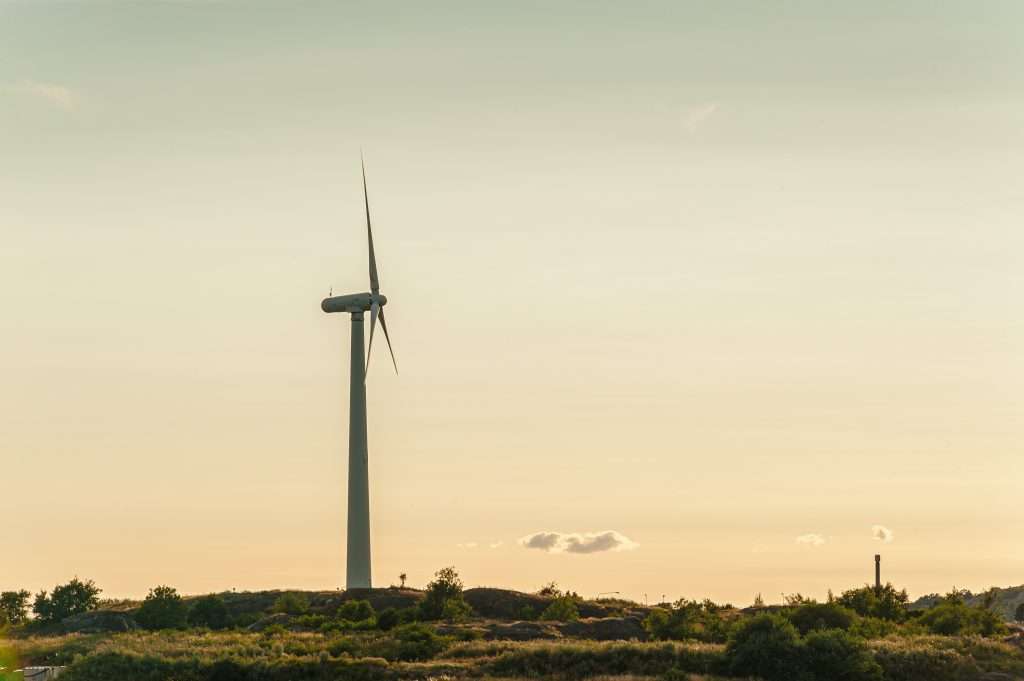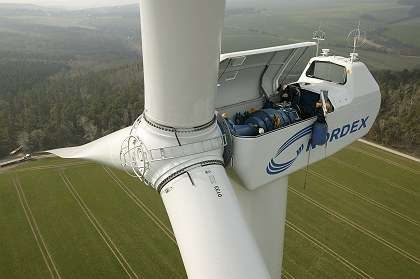
BY THRIVE GUEST Author
Nektarios Karinakis, QUT.
Dr Nektarios Karanikas is Associate Professor in the Health, Safety and Environment Discipline at the School of Public Health and Social Work, Faculty of Health. He was awarded his doctorate in Safety and Quality Management from Middlesex University (UK).
Dr Karanakis also holds a MSc in Human Factors & Safety Assessment in Aeronautics from Cranfield University (UK) where his thesis focused on the detection of human factors issues through the analysis of maintenance records. He graduated from the Hellenic Air Force Academy (GR) as an aeronautical engineer and worked as an officer in the Hellenic Air Force (HAF) for more than 18 years before he resigned at the rank of Lt. Colonel in 2014.
occupational health and safety risk in wind energy and alternative aviation fuels
Wind energy is still a relatively young industry (IRENA, 2019), which undergoes considerable changes by introducing new materials for turbine blades, towers and components. The specific sector has seen remarkable growth in recent years because of technological advancements and increased support from governments, investors and the public because of growing concerns about the environment (Adem et al., 2016).
Similarly, worries over diminishing oil supplies, price increases and environmental damage due to emissions (Gegg et al., 2014; Hari et al., 2015) have ignited research and production of alternative renewable fuels such as biofuels, generally produced from inedible oils. Notably, current technology allows fuel to be produced from other alternative sources, including non-biological resources (Coetzer et al., 2018). In aviation, all these fuel types are often named as sustainable aviation fuels (SAF) and are considered being the primary means by which the particular industry can reduce its carbon footprint (IATA, 2021).

Current and emerging challenges
Apart from using innovative materials and establishing new manufacturing processes, as wind turbines continue to increase significantly in physical size and mechanical complexity, they generate more requirements for maintenance and decommission (Aneziris et al., 2016). The combination of those factors shapes a sector with poorly understood occupational health and safety (OHS) risk (McKenna et al., 2016). This becomes more concerning when considering the changing composition of the workforce globally (e.g., workforce mobility; causal and part-time employees; contractor models) that leads away from the traditionally “standard” or “predictable” employee profile (Gallagher et al., 2016); each worker brings her/his own work practices, hazard awareness, generic health and safety management skills, and cultural and educational backgrounds. As such, wind energy technology is predicted to have the second-largest impact on Occupational Health & Safety, following only the risks introduced by nanotechnologies and nanomaterials, amongst all these new technologies targeting environmental sustainability (Wandzich & Plaza, 2017).
Likewise, although alternative aviation fuels are designed as a safer alternative to conventional aviation fuel types, they come with their own health hazards and risks and those shared with conventional fuels (Astbury, 2008; Hileman et al., 2014). Alternative aviation fuels are complex substances with biological and non-biological origins of their source materials and can generate varying occupational health risks. Alternative aviation fuels are mainly iso-paraffins and n-paraffins and contain hundreds of chemical compounds (Pires et al., 2018). Exposure to these complex and diverse substances in their chemical composition can trigger health effects on workers during the various processes related to aviation fuel manipulation, like aircraft refuelling and maintenance of fuel systems.

“The tremendous height of wind turbines make them difficult – and expensive – to maintain.” [Getty Images]
Are We Prepared?
Regarding the wind energy sector, apart from initiatives for environmental health investigations on wind farms and their potential impact on nearby communities, occupational aspects have not been examined inclusively and consistently. This observation comes from a literature review that suggests there is limited peer-reviewed scientific research on occupational health hazards in the wind farm sector, with studies on wind farms operation and maintenance primarily focusing on physical stress (Karanikas et al., 2021b). Therefore, from the perspective of occupational hygiene and workplace health and safety, the wind farms industry remains a challenging field to understand because of the lack of dedicated studies on unique and combined hazards and customised preventive controls. Such hazards include noise, exposure to chemicals and other substances along the entire lifecycle of wind turbines from manufacturing to decommissioning, vibration and exposure to heat and cold, and biological hazards such as bacteria, organic dust, bioaerosols, etc.
Similarly, when searching for studies on alternative fuels, academic literature, industry reports and documentation published by agencies suggests the comparative health effects of conventional and alternative aviation fuels are not clear. Our review revealed that research on effects of exposure to alternative fuels is restricted to animals and evaluations based on their composition compared with conventional fuels (Karanikas et al., 2021a). Also, research into the health effects of bio and synthetic fuels, in general, is limited with minimal evidence to suggest a significant reduction in human health exposure risk compared to regular fuels. This means that exposure to biofuels and synthetic fuels can still bring acute and chronic physiological effects, including implications on the skin and central auditory system and dysfunctions of nerves, level, lungs, and the immune system of workers.

occupational health and safety risk Going Forward
The forecasted growth in wind farms and aviation operations using biofuels means subsequent employment increase in these industries. This could magnify the potential for exposure of workers to health risks. As these two technological developments are relatively new, their long-term impacts on occupational health and safety risk remain unknown.
Therefore, as science and technology advance, the question to be addressed is which sustainability innovations are safer for the both the environment and people while ensuring coverage of energy demands. Instead of uncontrolled developments, introducing innovative solutions can be an opportunity to tackle known occupational health problems and avoid generating new ones.
To achieve the above, further collaboration amongst government and regulatory authorities, academic and research institutions and the industry is necessary to increase knowledge regarding occupational health and safety risk in the alternative fuels and wind farm sectors. More attention, research and consultation are necessary during the early stages of the development of sustainability technologies to avoid unfavourable implications on workplace health and safety and minimise costs and disruptions while dealing with such issues in the future.
References:
- Adem, A., Dağdeviren, M., Çolak, A., Kabak, M., 2016. Fuzzy prioritization approach for risks of wind turbine life cycle. Procedia Computer Science 102, 406–413. http://dx.doi.org/10.1016/j.procs.2016.09.419
- Aneziris, O.N., Papazoglou, I.A., Psinias, A., 2016. Occupational risk for an onshore wind farm. Safety Science. 88, 188–198. http://dx.doi.org/10.1016/j.ssci.2016.02.021
- Astbury, G. 2008. A review of the properties and hazards of some alternative fuels. Process Safety and Environmental Protection, 86, 397–414. https://doi.org/10.1016/j.psep.2008.05.001
- Coetzer, R., Joubert, T., Viljoen, C., Nel, R., Strydom, C. 2018. Response surface models for synthetic jet fuel properties. Applied Petrochemical Research, 8(1), 39–53. https://doi.org/10.1007/s13203-018-0196-7
- Gallagher, C., Underhill, E., Rimmer, M., 2016. Occupational safety and health management systems in Australia: barriers to success. Policy and Practice in Health and Safety. 1 (2), 67–81. http://dx.doi.org/10.1080/14774003.2003.11667637
- Gegg, P., Budd. L., Ison, S. 2014. The market development of aviation biofuel: Drivers and constraints. Journal of Air Transport Management, 39, 34–40. https://doi.org/10.1016/j.jairtraman.2014.03.003
- Hari, T. K., Yaakob, Z., Binitha, N. N. 2015. Aviation biofuel from renewable resources: Routes, opportunities and challenges. Renewable and Sustainable Energy Reviews, 42, 1234–44. https://doi.org/10.1016/j.rser.2014.10.095
- Hileman, J., Stratton, R. 2014. Alternative jet fuel feasibility. Transport Policy, 34, 52–62. https://doi.org/10.1016/j.tranpol.2014.02.018
- IATA. 2015. Sustainable Alternative Fuel – Advocacy. Montreal – Geneva: International Air Transport Association. https://www.iata.org/contentassets/d13875e9ed784f75bac90f000760e998/safa-1st-edition-2015.pdf
- IRENA, 2019. Future of Wind: Deployment, Investment, Technology, Grid Integration and Socio-Economic Aspects. International Renewable Energy Agency, https://www.irena.org/-/media/Files/IRENA/Agency/Publication/2019/Oct/IRENA_Future_of_wind_2019.pdf
- Karanikas, N., Foster, C., Hernandez, A. B., Harvey, A., Targal, O., Horswill, N. 2021a. Conventional and Alternative Aviation Fuels: Occupational Exposure and Health Effects. ACS Chemical Health and Safety, 28 (3), 159–170. https://doi.org/10.1021/acs.chas.0c00120
- Karanikas, N., Steele, N., Bruschi, K., Robertson, C., Kass, J., Popovich, A., MacFadyen, C. 2021b. Occupational health hazards and risks in the wind industry, Energy Reports, 7, 3750-3759. https://doi.org/10.1016/j.egyr.2021.06.066
- McKenna, R., Ostman v.d. Leye, P., Fichtner, W., 2016. Key challenges and prospects for large wind turbines. Renewable and Sustainable Energy Reviews. 53, 1212–1221. http://dx.doi.org/10.1016/j.rser.2015.09.080
- Pires, A., Han, Y., Kramlich, J., Garcia, P. 2018. Chemical composition and fuel properties of alternative jet fuels. Bioresources, 13(2), 2632-2657.
- Wandzich, D.E., Plaza, G.A., 2017. New and emerging risks associated with green workplaces. Workplace Health & Safety. 65 (10), 493–500. http://dx.doi.org/10.1177/2165079916674967























